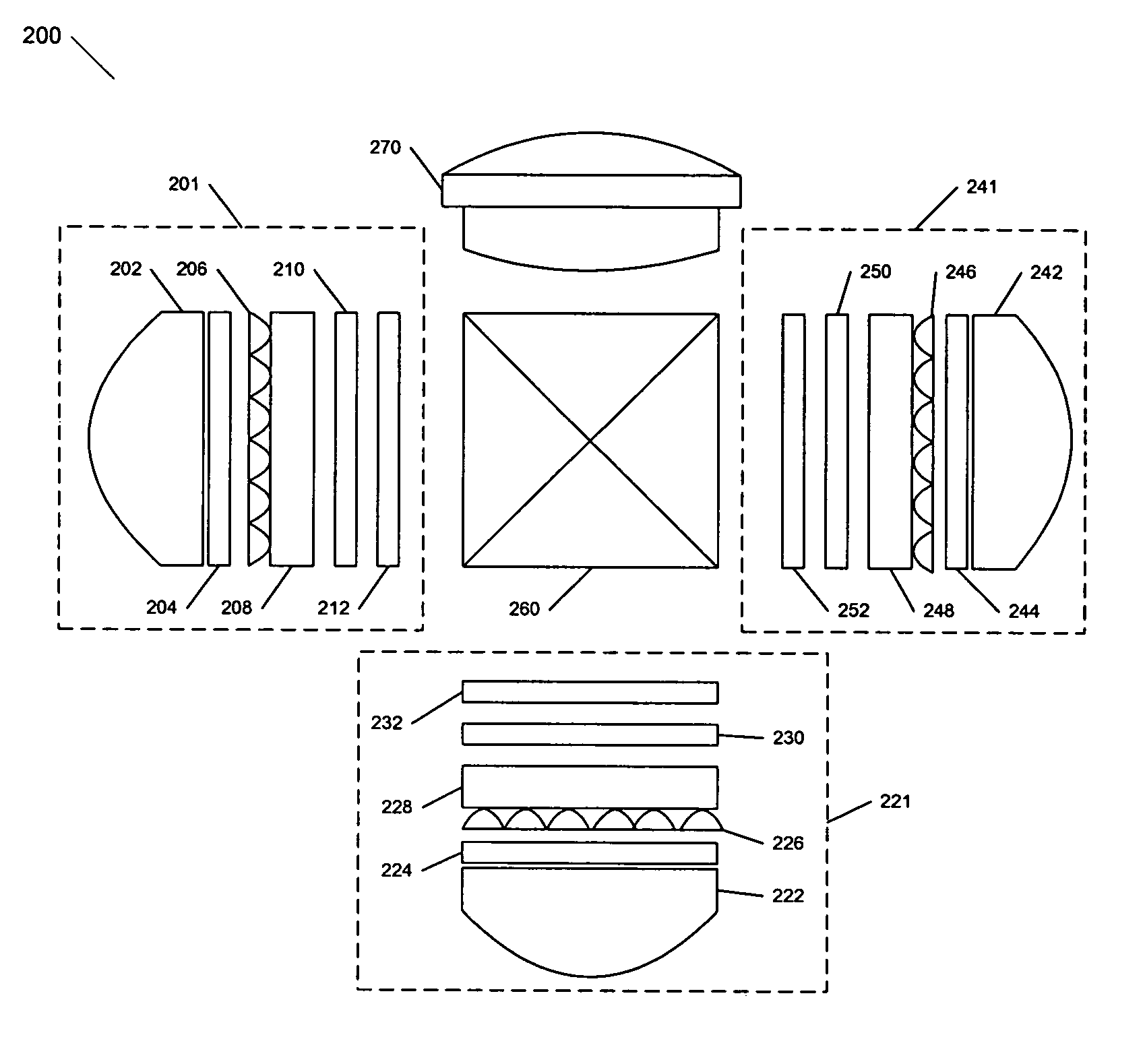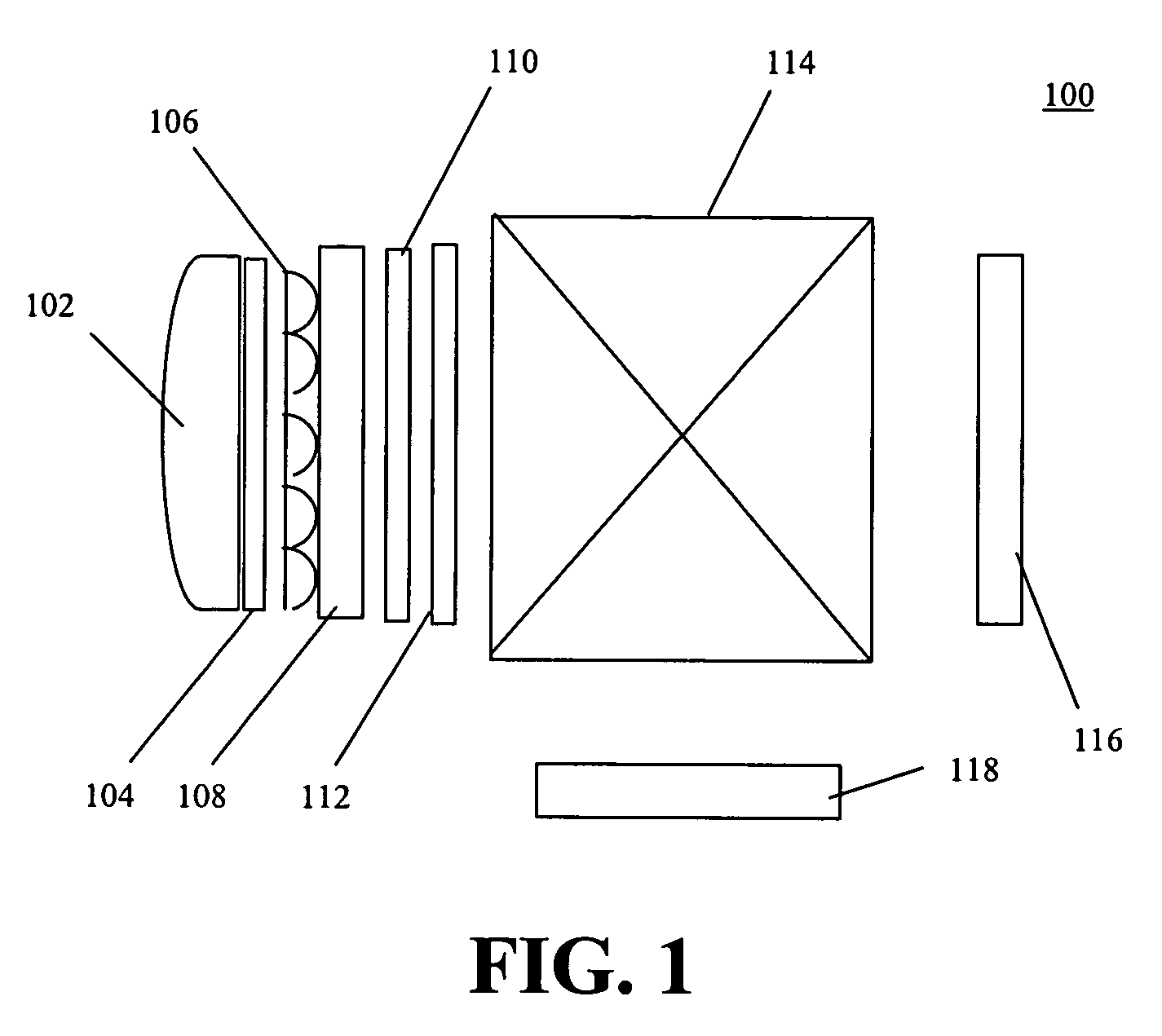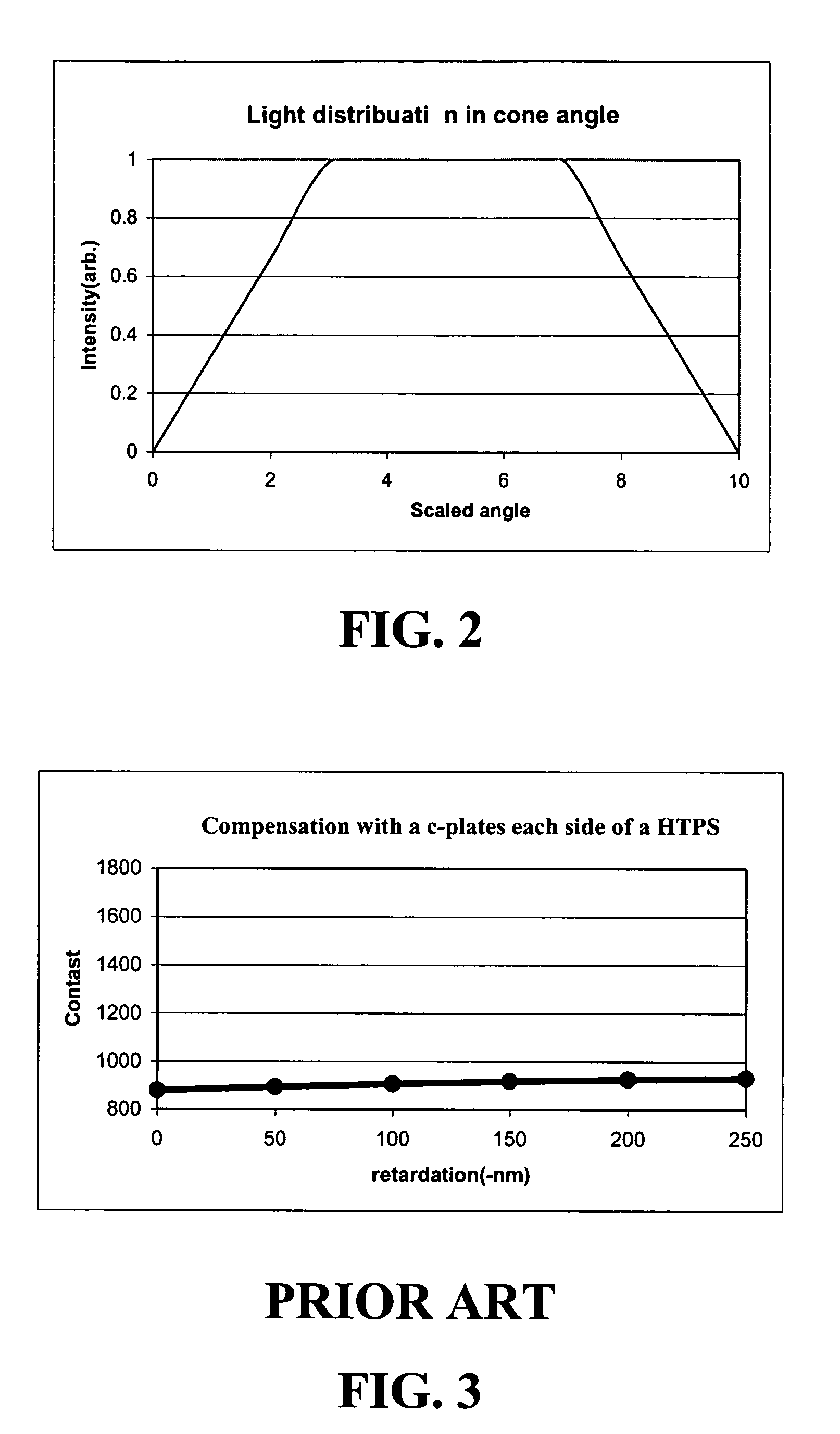Oblique plate compensators for projection display systems
- Summary
- Abstract
- Description
- Claims
- Application Information
AI Technical Summary
Benefits of technology
Problems solved by technology
Method used
Image
Examples
Embodiment Construction
[0019]The desired sequential contrast of projection systems has and continues to increase, owing in part to the high performance of digital light processing based projection systems. Liquid crystal panels, such as high temperature polycrystalline silicon (HTPS) twisted nematic liquid crystal displays, are transmissive in nature and have a small diagonal size (<1.2″ or <3.1 cm). These panels use a twisted nematic liquid crystal alignment, operating in a normally white mode, with the polarized light introduced parallel to the rub direction, it is e-mode. However the compensation scheme works for both e and o mode. For e-mode, the rub direction of LC is parallel to the direction of polarizer while in o-mode, the rub direction of LC is perpendicular to the direction of polarizer. The projection systems operate at typical f-numbers of 2.5 at the input side so as to efficiently utilize lamp emission. When the projection systems include micro-lens arrays, image light is transmitted at much...
PUM
 Login to View More
Login to View More Abstract
Description
Claims
Application Information
 Login to View More
Login to View More - R&D
- Intellectual Property
- Life Sciences
- Materials
- Tech Scout
- Unparalleled Data Quality
- Higher Quality Content
- 60% Fewer Hallucinations
Browse by: Latest US Patents, China's latest patents, Technical Efficacy Thesaurus, Application Domain, Technology Topic, Popular Technical Reports.
© 2025 PatSnap. All rights reserved.Legal|Privacy policy|Modern Slavery Act Transparency Statement|Sitemap|About US| Contact US: help@patsnap.com



